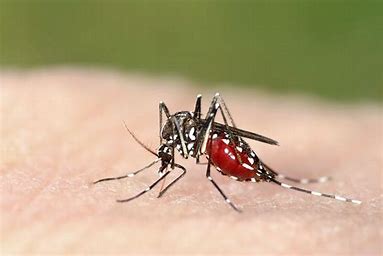Introduction
Chikungunya is a mosquito-borne viral disease that is transmitted to humans through the bite of infected Aedes mosquitoes, primarily Aedes aegypti and Aedes albopictus. The word “chikungunya” means “to become contorted” in the Makonde language, describing the stooped appearance of those affected by severe joint pain. In this article, we will explore the key aspects of chikungunya, including its causes, symptoms, diagnosis, treatment, and prevention.
Causes and Transmission
Chikungunya is caused by the chikungunya virus (CHIKV), which belongs to the alphavirus genus of the family Togaviridae. The virus is primarily transmitted through the bite of infected female mosquitoes. The Aedes mosquitoes that transmit chikungunya are also responsible for transmitting other diseases such as dengue and Zika virus.
The main modes of chikungunya transmission include:
- Mosquito Bites: When an Aedes mosquito bites a person infected with chikungunya virus, it ingests the virus along with the blood meal. The virus replicates within the mosquito and can be transmitted to other individuals when the infected mosquito bites them.
- Vertical Transmission: There have been rare cases of vertical transmission, where the virus is passed from a pregnant woman to her fetus during pregnancy or at the time of delivery. This mode of transmission is relatively uncommon.
Symptoms
The symptoms of chikungunya typically appear within 2 to 7 days after a person is bitten by an infected mosquito. Common signs and symptoms include:
- Joint Pain: Severe joint pain, often affecting the hands, wrists, ankles, and feet, is a characteristic symptom of chikungunya. The joint pain can be debilitating and may last for weeks or even months.
- Fever: High fever, typically over 101°F (38.5°C), is common in chikungunya. The fever may be sudden in onset and accompanied by chills.
- Rash: Many individuals with chikungunya develop a rash, which may be maculopapular (red, raised spots) or vesicular (fluid-filled blisters). The rash usually appears on the trunk and limbs and may be itchy.
- Muscle Pain: Muscle pain, often accompanied by stiffness, is another common symptom. It can affect various muscle groups, including the back, shoulders, and legs.
- Headache: Some individuals may experience headaches, which can range from mild to severe.
- Fatigue: Fatigue and malaise (general discomfort) are common during the acute phase of the illness.
In most cases, the symptoms of chikungunya resolve within a few weeks. However, joint pain may persist for months or even years in some individuals, leading to a condition known as post-chikungunya chronic arthritis.
Diagnosis
Diagnosing chikungunya requires a combination of clinical evaluation, medical history, and laboratory tests. Common diagnostic methods include:
- Blood Tests: Blood tests can detect the presence of chikungunya virus-specific antibodies or the viral genetic material (RNA). These tests are typically performed during the acute phase of the illness or within the first few days of symptoms.
- Serologic Tests: Serologic tests measure the presence of antibodies against the chikungunya virus in the blood. These tests can be useful for confirming a recent or past infection.
Treatment
Currently, there is no specific antiviral treatment available for chikungunya. Treatment for chikungunya is primarily focused on relieving the symptoms and providing supportive care. This includes:
- Rest: Getting plenty of rest helps the body recover and reduces the risk of complications.
- Fluids: Staying hydrated by drinking plenty of fluids is important to prevent dehydration, especially during periods of high fever and sweating.
- Pain Relief: Over-the-counter pain relievers such as acetaminophen (paracetamol) can help alleviate fever, joint pain, and other discomforts. Non-steroidal anti-inflammatory drugs (NSAIDs) may be used under medical supervision.
- Symptom Management: Applying cold packs or using topical creams or ointments may help reduce joint pain and swelling. Physical therapy and gentle exercises may also be beneficial in managing joint stiffness.
It is important for individuals with chikungunya to avoid mosquito bites to prevent further transmission of the virus.
Prevention
Preventing chikungunya primarily focuses on mosquito bite prevention. Preventive measures include:
- Mosquito Control: Eliminating mosquito breeding sites by removing stagnant water containers, using mosquito nets or screens, and applying insecticides can help reduce the mosquito population.
- Personal Protection: Using insect repellents containing DEET, picaridin, IR3535, or oil of lemon eucalyptus, wearing long-sleeved shirts, long pants, and socks, and using bed nets can provide personal protection against mosquito bites.
- Community Efforts: Public health initiatives and community engagement are essential for effective mosquito control and prevention strategies.
Conclusion
Chikungunya is a mosquito-borne viral disease characterized by severe joint pain, fever, and rash. While the symptoms are often self-limiting, the joint pain can be long-lasting and debilitating for some individuals. Mosquito bite prevention, mosquito control measures, and public health interventions are crucial in reducing the transmission of chikungunya. By raising awareness and implementing preventive measures, we can minimize the impact of this viral disease on affected communities.

